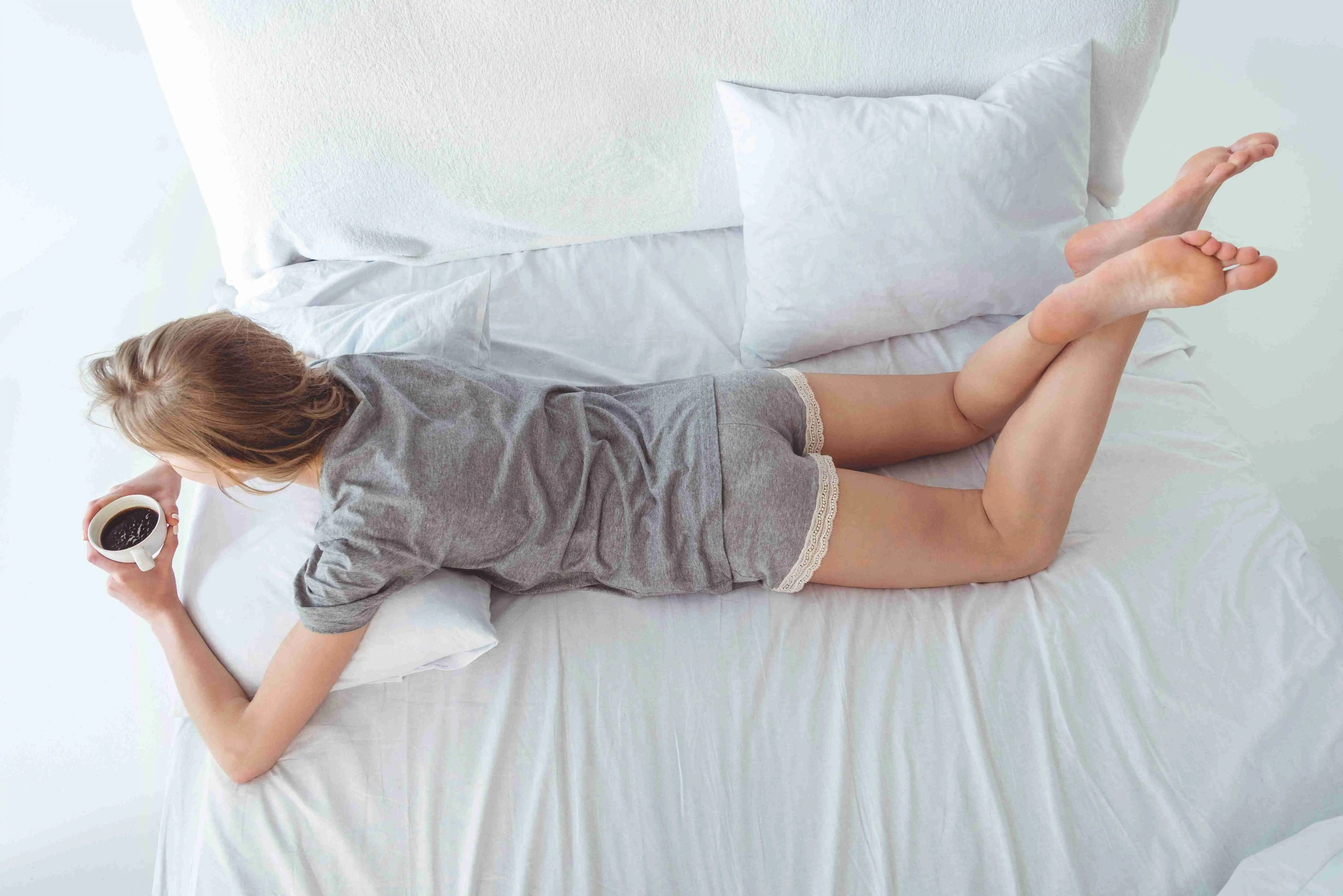The way we sleep can reveal a lot about our personality, health, and overall well-being. Our sleep positions can provide insights into our subconscious thoughts and emotions.
From the fetal position to sleeping on our back or stomach, each position tells a unique story about our characteristics.
In this article, we will explore what different sleep positions mean and how they can impact our sleep quality.
Why Sleep Positions Matter
- Impact on Health: Different sleep positions can either alleviate or exacerbate various health conditions such as back pain, sleep apnea, and acid reflux. For instance, sleeping on one’s back with proper support can help maintain spinal alignment, reducing the risk of back pain, while side sleeping is often recommended for individuals with sleep apnea to keep airways open.
- Influence on Personality Perception: The way one sleeps can reflect certain personality traits and behaviors. For instance, individuals who sleep in a fetal position may be perceived as more sensitive and introverted, while those who sleep on their backs may be seen as confident and open. Understanding the influence on personality perception can provide valuable insights for both personal development and social interactions.
- Sleep Quality Connection: The connection between sleep quality and health is evident, as poor sleep positions can lead to frequent awakenings, discomfort, and ultimately insufficient rest. Understanding the importance of sleep positions can aid individuals in optimizing their sleep environment, thereby enhancing their overall well-being and ensuring restorative sleep.
Most Common Back Sleeping Positions
Back sleeping positions are favored by many individuals due to their potential health benefits. This sleeping position is often recommended by healthcare professionals as it helps in maintaining proper alignment of the spine, reducing the risk of developing back and neck pain.
Here are some of the most common back sleeping positions and their potential impact on sleep quality and overall health.
The Starfish Position

This position resembles a starfish, where a person lies on their back with their arms and legs spread out. It is often associated with individuals who are open, welcoming, and highly sociable.
However, sleeping in this position can also lead to snoring and sleep disturbances, which can affect the quality of sleep.
The Soldier Position

The soldier position is a sleeping position in which a person lies on their back with their arms straight down by their sides. This position gives the impression of a soldier standing at attention. People who prefer this sleeping position are often disciplined and organized.
However, sleeping in this position may increase the risk of snoring and sleep apnea due to the tongue falling back and obstructing the airway.
Most Common Side Sleeping Positions
One of the most common sleeping positions is on the side. Side sleeping is popular because it offers several benefits, such as reducing snoring and alleviating acid reflux.
There are three main variations of side sleeping positions: the fetal position, the log position, and the yearner position, each has its own unique set of benefits.
The Fetal Position

The fetal position is when a person sleeps on their side with their knees drawn towards their chest. This position resembles that of a fetus in the womb.
People who sleep in this position tend to be sensitive, introverted and may appear shy or reserved. Sleeping in the fetal position can be beneficial for those who snore or suffer from sleep apnea, as it helps keep the airways open.
The Yearner Position

The yearner position is similar to the fetal position but with arms stretched forward as if reaching for something.
People who sleep in this position are often open-minded, adventurous, and have a tendency to take risks. While this sleeping position allows for better digestion and reduces the risk of acid reflux, it may also put a strain on the shoulders and lead to discomfort.
The Log Position
The log position involves lying on one's side with arms and legs extended straight. People who prefer this position are often social, easygoing, and trusting individuals.
Sleeping in this position can help reduce snoring and alleviate symptoms of acid reflux. However, it can also lead to stiffness in the joints due to limited movement during sleep.
Most Common Stomach Sleeping Positions
Stomach sleeping is often a popular choice for those who snore or suffer from sleep apnea, as it can help keep the airways open.
However, it is important to note that stomach sleeping can also put a strain on the neck and spine, leading to potential discomfort or pain. Therefore, finding the right stomach sleeping position is crucial for a good night's rest.
The Freefall Position

The freefall position involves lying on one's stomach with the head turned to one side and arms wrapped around a pillow. People who sleep in this position are often outgoing, bold, and assertive individuals.
One potential drawback of sleeping in this position is that it can strain the neck and spine due to the unnatural alignment.
Finding the Best Sleep Position for You
Finding the best sleep position for you is crucial for achieving optimal rest and maintaining overall health. Sleep positions significantly impact the quality of sleep one experiences.
Back sleeping
Back sleeping, or the supine position, is often recommended by health professionals for its ability to maintain a neutral spine position and evenly distribute body weight. This position helps reduce pressure points and can alleviate neck and back pain.
Additionally, back sleeping can minimize the risk of developing wrinkles and prevent sagging of the breasts. However, it may not be suitable for individuals with sleep apnea or snoring issues, as lying on one's back can exacerbate these conditions.
Side Sleeping
Side sleeping is another popular position that offers various health benefits. It promotes better digestion and can help reduce symptoms of acid reflux and heartburn when done on the left side.
Side sleeping is also beneficial for reducing snoring and alleviating sleep apnea, as it helps keep airways open. Pregnant women are often advised to sleep on their left side to improve blood flow to the fetus.
However, side sleeping can sometimes lead to shoulder discomfort and may cause wrinkles due to facial pressure against the pillow.
Stomach sleeping
Sleeping on the stomach, or the prone position, is less commonly recommended due to its potential drawbacks. While it may help reduce snoring by keeping airways more open, it often leads to misalignment of the spine and increased strain on neck muscles.
This position can exacerbate lower back pain and cause numbness or tingling in limbs due to poor circulation. Therefore, stomach sleepers should use a thin pillow or no pillow at all to minimize strain on the neck.
If you’re suffering from lower back pain, then it’s recommended to try and change your sleeping position if you’re a stomach sleeper, and in the next section, you’ll find helpful tips to achieve that.
Tips to Change Your Sleeping Position

Changing your sleep position can significantly impact your overall health and well-being. It might be time to consider different sleeping positions if you experience chronic pain, such as back, neck, or shoulder discomfort.
Below are some tips to help you adjust to your desired sleeping position.
If you Want to be a Back Sleeper
- Place a Pillow Underneath Your Knees: This simple adjustment helps maintain the natural curve of your lower spine, thereby reducing strain and enhancing comfort.
- Place a Pillow Under Your Lower Back: Placing a small, firm pillow under your lower back can provide extra support, further promoting proper posture and minimizing discomfort.
- Surround Yourself with Pillows: By strategically positioning pillows, you can create a conducive environment that encourages and supports this healthier sleeping posture.
If you Want to be a Side Sleeper
- Use Medium Firm Mattress: It is essential to use a medium-firm mattress, which provides balanced support and comfort to your body.
- Put a Firm Pillow Between Your Knees: This practice helps maintain proper hip alignment and reduces strain on your lower back. Additionally, placing a firm pillow between your knees can enhance overall comfort, making it easier to stay in the side-sleeping position throughout the night.
- Use a Body Pillow: Using a body pillow can help maintain proper spinal alignment, reduce pressure points, and prevent you from rolling onto your back or stomach during the night.
If you Want to be a Stomach Sleeper
- Use a Thin Pillow: By using a thin pillow, you can minimize the elevation of your head and neck, allowing for a more comfortable sleeping position. It is important to choose a pillow that is soft and pliable, as this will help to better align your spine while sleeping on your stomach.
- Place a Pillow Under Your Hips: This can help alleviate any strain or discomfort on your lower back and spine, as it helps to maintain a more neutral alignment. By elevating your hips slightly, you can reduce the pressure on your lower back and allow for a more comfortable sleep.
- Stretch Before and After Bed: This will help to loosen up your muscles and prepare your body for the new sleeping position. By incorporating stretching into your bedtime routine, you can gradually adjust your body and make it more comfortable to sleep on your stomach.
FAQs
When should I consider changing my sleeping position?
Changing your sleeping position may be necessary if you experience certain issues or discomfort during sleep. One instance where you should consider changing your sleeping position is if you frequently wake up with neck or back pain.
Is stomach sleeping bad for back pain?
Stomach sleeping can potentially worsen back pain. This position puts strain on the spine and can cause misalignment, leading to discomfort and pain. When lying on the stomach, the lower back is forced into an exaggerated curve, increasing pressure on the discs and joints.
What is the most common sleeping position?
The most common one is the side sleeping position. Many people find comfort in sleeping on their sides, either on the left or right side.
Is back sleeping the best sleeping position?
Yes, back sleeping is often recommended as the most proper sleeping position for a variety of reasons as sleeping on your back helps to maintain proper alignment of the spine, reducing the risk of developing back and neck pain.
Conclusion
Our sleep positions can provide fascinating insights into our personality traits, emotional state, and overall health.
From the protective nature of those who prefer the fetal position to the confident and outgoing individuals who sleep on their stomachs, our sleep positions reveal a lot more than just how we rest at night.
It is important to note that while sleep positions can offer some interesting insights, they should not be taken as definitive indicators of one's character or well-being.
Jessica H.
Jessica is a reviewer, writer, and sleep enthusiast at Sleepiverse. Jessica graduated with her master's degree in Nursing research and education. She is a registered nurse and currently works in the Intensive Care Unit. Since becoming a nurse, Jessica has worked the night shift, which means a disrupted sleep schedule. Knowing she needed to function at her best while caring for patients at night, she spent a lot of time researching how to sleep well with a difficult schedule.


